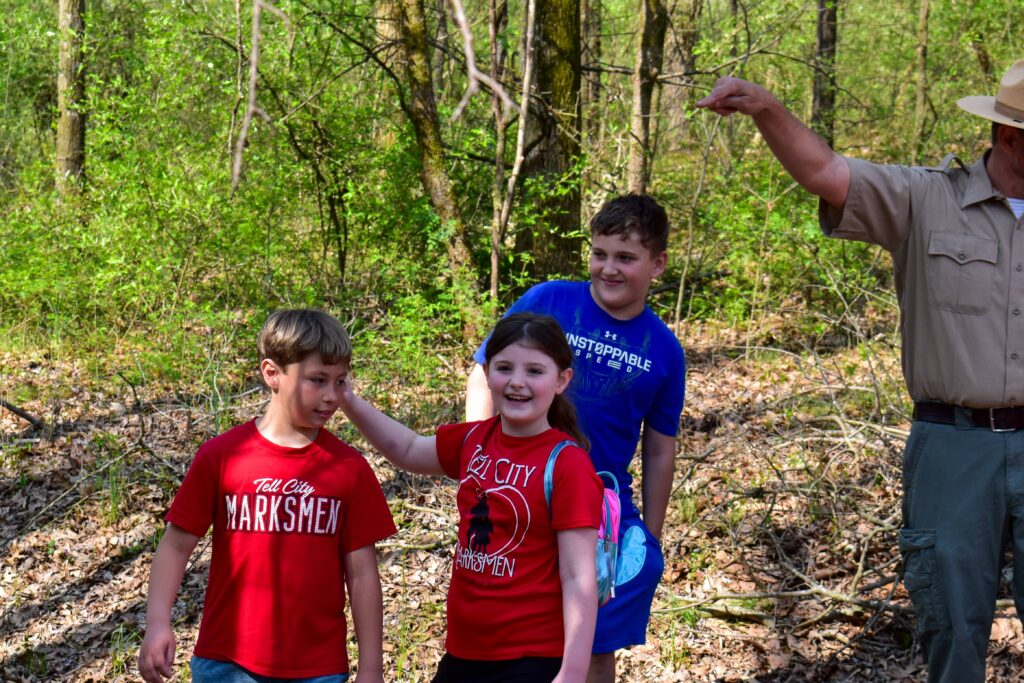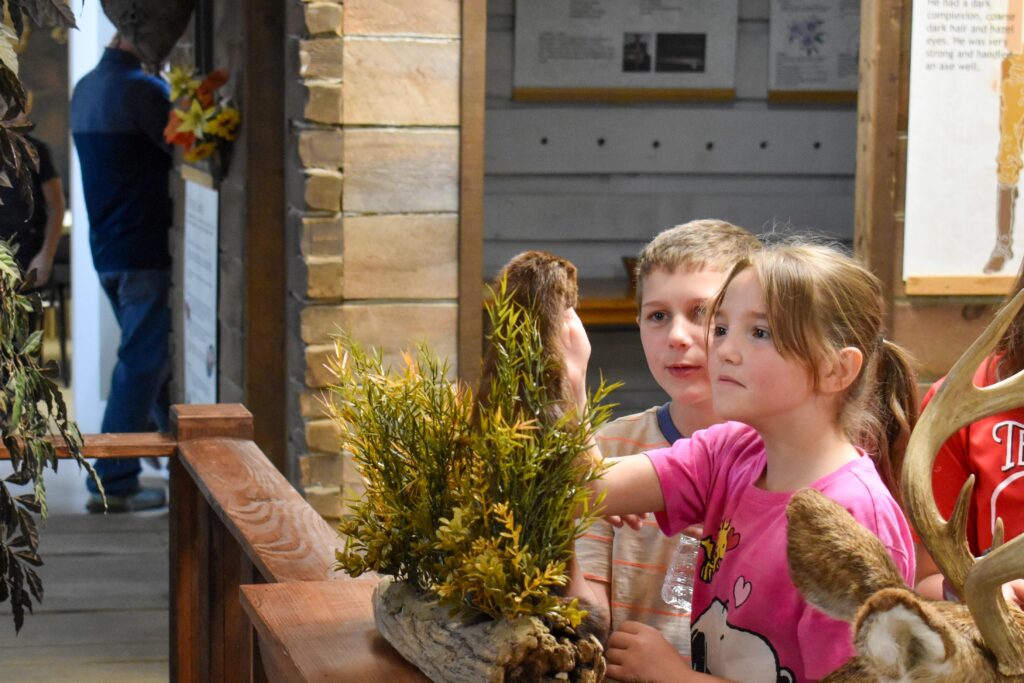Discovering the Outdoors in Lincoln’s Boyhood Home

With greening trees and early season wildflowers blooming around them, a large group of third grade students from William Tell Elementary took a walk through history earlier this month, thanks in part to the Discover the Outdoors field trip grant program. With that special air of excitement that only comes from a field trip, the students set off for a day of learning and exploration at Lincoln State Park.
Discover the Outdoors, offered in partnership with Indiana State Parks, encourages educators to take students on field trips that explore Indiana’s natural resources and history. Since 2013, the program has helped more than 25,200 students spend meaningful time outdoors.
Established in 1932 as a memorial to Abraham Lincoln’s mother, the park contains many opportunities to glimpse into the past and explore Hoosier history. Students began their day doing just that at the Little Pigeon Creek Baptist Church and Cemetery. The church, a community focal point for the settlers of the area, still holds regular services today. The cemetery contains many graves from the Little Pigeon Creek Settlement, including Lincoln’s beloved sister, Sarah.

Students learn about reptiles native to Lincoln State Park near the shore of Lake Lincoln.
With Michael Crews, the park’s interpretive naturalist leading the way, a short walk along the Gentry Store to Troy Road took the students to their next experience. The road, now part of the park’s trail system, played an important part of trade in the area during Lincoln’s childhood.
“It was a fun experience to walk where a president of the United States once stood,” one student said.
Down the road, Crews led the students through an entertaining exercise that taught them about a horse-powered mill that was believed to operate in the area. They took particular interest in the idea that every part of the corn plant was used, and that even the cobs were likely turned into toys for the children.

Students enjoy acting out the horse-powered mill process.
To wrap up the eventful morning, the students spent considerable time learning about the natural history of the area. Inside the nature center, Crews discussed wildlife species native to the area and highlighted historic species such as bison, bears, and elk that were pushed out of the region during settlement. Outside, students engaged with a current resident of the park, the Eastern black king snake.
As the students boarded the buses to depart, the chatter and smiles told the story of the day. Thanks to the continued generosity of our donors, thousands of Hoosier students have experienced field trips like this one, creating lasting memories and a meaningful connection to Indiana’s outdoors.

Students learn about wildlife in the park’s nature center.
“I recommend that teachers apply for this grant because you learn a lot while having fun,” one student said.
Applications for the 2025-26 school year are accepted until April 30. Learn more about applying here. Please consider helping us inspire the next generation by donating today.
